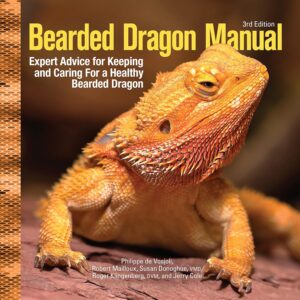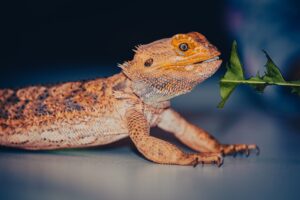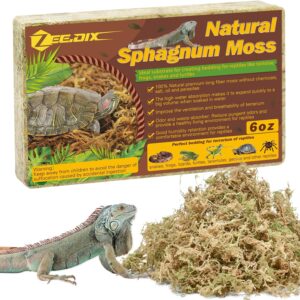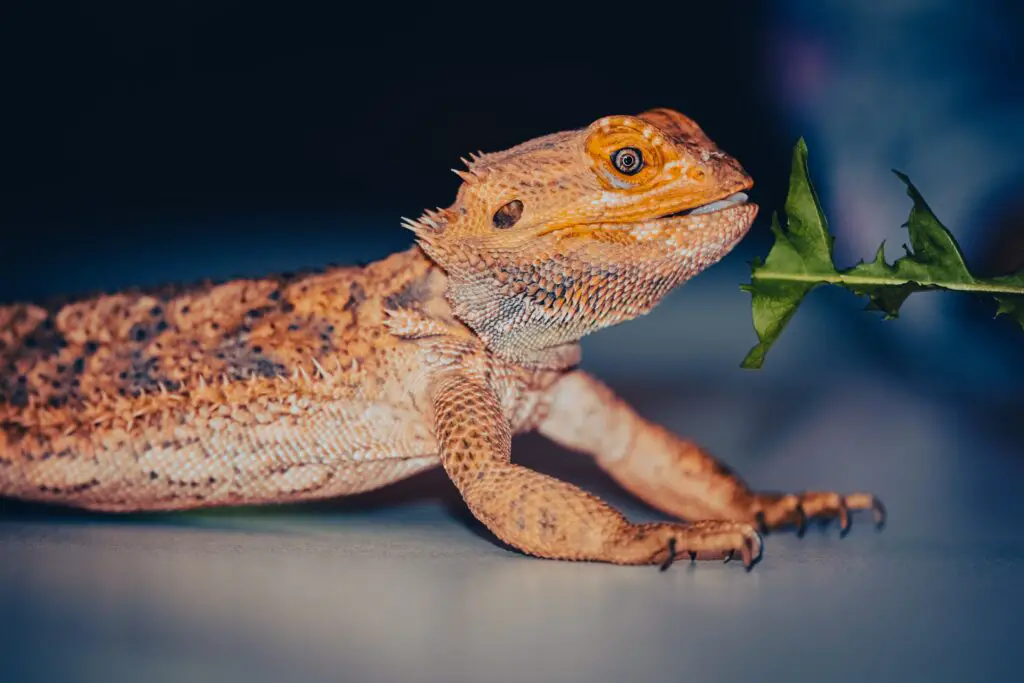Bad bearded dragon eggs
Brief Overview of Bearded Dragons as Reptilian Pets
Bad bearded dragon eggs: A beloved and captivating reptile species, bearded dragons have gained immense popularity among pet enthusiasts due to their unique appearance and docile nature. Native to the arid regions of Australia, these diurnal lizards belong to the Pogona genus and are characterized by their triangular heads, spiky tails, and, most notably, their beard-like protrusions under the chin that can puff up when threatened or during displays of dominance. With their friendly demeanor and relatively low maintenance requirements, bearded dragons have become a popular choice for reptile aficionados all over the world.
Not only are bearded dragons aesthetically appealing with their vibrant colors ranging from earthy tones to striking yellows or oranges, but they also possess distinct traits that make them great pets. These reptiles are known for their sociability and often exhibit a curious nature when interacting with humans.
They can recognize their owners and develop individualistic personalities over time. Additionally, bearded dragons have relatively long lifespans compared to other reptilian pets; if well cared for, they can live up to 12 years or more in captivity.
Introducing the Topic of Bad Bearded Dragon Eggs
 While owning a bearded dragon can be an immensely rewarding experience, it is crucial for pet owners to understand various aspects of their reproductive cycle. One noteworthy aspect is the egg-laying behavior exhibited by female bearded dragons; however, not all eggs produced in a clutch will yield healthy hatchlings. This leads us to delve into the intriguing subject matter of bad bearded dragon eggs.
While owning a bearded dragon can be an immensely rewarding experience, it is crucial for pet owners to understand various aspects of their reproductive cycle. One noteworthy aspect is the egg-laying behavior exhibited by female bearded dragons; however, not all eggs produced in a clutch will yield healthy hatchlings. This leads us to delve into the intriguing subject matter of bad bearded dragon eggs.
Bad eggs refer to those that have developed abnormally or lack viable embryos within them. The reasons behind such occurrences can vary greatly—ranging from genetic abnormalities inherited from parents to environmental factors influencing the egg’s development.
Identifying and managing bad bearded dragon eggs is essential not only for successful breeding but also for the well-being of the female dragon and the overall health of the reptilian population. Throughout this article, we will explore in-depth the different factors contributing to bad bearded dragon eggs, their physical characteristics, as well as the causes and consequences associated with them.
Furthermore, we will discuss prevention strategies and management techniques that can help mitigate the occurrence of bad eggs. Additionally, we will delve into rare cases where genetic mutations or unforeseen environmental factors have resulted in unique abnormalities within bearded dragon eggs.
Understanding Bearded Dragon Reproduction
The Intricacies of Bearded Dragon Breeding
Bearded dragons, scientifically known as Pogona vitticeps, are fascinating reptiles cherished by many as exotic pets. Understanding the intricacies of their reproductive process is essential for any aspiring breeder or enthusiast.
Bearded dragon breeding typically takes place during the spring and summer months when these reptiles reach sexual maturity, which is around 1 to 2 years old. The reproductive success heavily relies on optimal environmental conditions and careful attention to the female’s egg-laying behavior.
Egg-Laying Behavior: A Fascinating Natural Phenomenon
After successful mating, female bearded dragons undergo a complex sequence of events leading up to egg-laying. This process begins with the development and maturation of follicles within their ovaries, where eggs form and grow.
As the eggs near maturity, females exhibit noticeable changes in behavior, becoming restless and increasingly focused on finding an appropriate nesting site. Once a suitable location is identified, typically a sandy substrate or specially provided nesting box within captivity, the female bearded dragon will begin preparing her nest by digging meticulously with her powerful front legs.
This behavior mimics their natural instincts to create a safe environment for their eggs in the wild. The depth of the nest varies depending on individual preference but is often around 6 to 8 inches deep.
Upon finishing excavation, the female bearded dragon begins laying her eggs one by one into the carefully crafted nest. Each clutch can consist of anywhere from 10 to 30 eggs, although this number may vary between individuals.
After placing an egg in its designated spot, she will delicately cover it with sand using her hind legs until all eggs are securely buried. The entire egg-laying process can take several hours as females display remarkable patience and precision throughout each step.
It is important for breeders to create a suitable nesting environment that mimics the natural habitat to ensure the comfort and successful egg-laying of their bearded dragons. Understanding both the breeding process and egg-laying behavior of female bearded dragons is crucial for those interested in their care and reproduction.
By providing optimal conditions and closely observing these fascinating reptiles, breeders can help facilitate successful egg-laying, leading to healthy offspring. In the next section, we will delve into the identification of bad bearded dragon eggs, exploring factors that contribute to their development.
Identifying Bad Bearded Dragon Eggs
Factors that Contribute to Bad Eggs
Several factors can contribute to the development of bad bearded dragon eggs. One of the primary contributors is genetics.
 Bearded dragons that carry certain genetic abnormalities may produce eggs that are more likely to be considered “bad.” These abnormalities can range from infertility issues to deformities within the developing embryos. In some cases, these genetic conditions can be inherited from previous generations or occur spontaneously.
Bearded dragons that carry certain genetic abnormalities may produce eggs that are more likely to be considered “bad.” These abnormalities can range from infertility issues to deformities within the developing embryos. In some cases, these genetic conditions can be inherited from previous generations or occur spontaneously.
Apart from genetics, incubation conditions also play a crucial role in determining egg quality. Incorrect temperature and humidity levels during the incubation process can lead to the formation of bad eggs.
Bearded dragon eggs require specific and stable environmental conditions for healthy development. Deviations from optimal temperature or humidity ranges can result in poor egg quality, impacting embryo development and viability.
Physical Characteristics of Bad Eggs
Bad bearded dragon eggs often exhibit noticeable physical characteristics that set them apart from healthy ones. Discoloration is one such indicator, where the eggshell may appear significantly different in color compared to normal, healthy eggs.
This discoloration can vary from pale spots or blotches to a completely different hue altogether. In addition to discoloration, unusual textures also indicate a bad egg.
Healthy bearded dragon eggs have a smooth and uniform shell surface when touched gently, while bad eggs may have irregularities such as rough patches or excessive softness. These abnormalities suggest improper development and compromised structural integrity within the egg.
Comparison between Good and Bad Eggs
When comparing good and bad bearded dragon eggs side by side, several differences become apparent beyond just their physical appearance. Good eggs typically have a rounded shape with no visible deformities, providing an indication of proper embryonic growth inside.
They maintain a consistent weight throughout incubation due to their healthy internal content. On the other hand, bad eggs often display irregular shapes or deformities, indicating developmental issues.
These eggs are often lighter in weight, suggesting inadequate yolk absorption or reduced embryo growth. Moreover, when candling (the process of illuminating the egg to observe the interior) is performed on bad eggs, they may show signs such as lack of blood vessels or abnormal formations within.
Identifying bad bearded dragon eggs relies on closely examining various factors such as genetics and incubation conditions while also noting their physical characteristics and comparing them with healthy counterparts. By understanding these indicators, reptile owners and breeders can take appropriate measures to address and manage the presence of bad eggs in a clutch.
Causes and Consequences of Bad Eggs
Genetic Abnormalities Leading to Bad Eggs
Genetic abnormalities are one of the key factors behind the occurrence of bad bearded dragon eggs. These abnormalities can manifest in various ways, including infertility and deformities in the developing embryos.
In some cases, certain genetic combinations within the breeding pair can result in non-viable eggs or eggs with compromised development. These abnormalities may be inherited from one or both parents, highlighting the importance of careful selection and genetic planning in breeding programs.
Infertility is a common consequence of genetic abnormalities in bearded dragon eggs. The presence of gene mutations, such as those affecting reproductive hormones or organ development, can impair successful fertilization or proper egg formation.
When infertility occurs, the affected eggs may not develop beyond an early stage or fail to hatch altogether. Deformities are another outcome associated with genetic abnormalities in bad bearded dragon eggs.
These deformities can range from minor physical irregularities to severe structural malformations, which often lead to poor hatchling viability and survival rates. Some common deformities include limb malformations, missing body parts, or abnormal growth patterns that hinder normal functioning.

Environmental Factors Affecting Egg Development
Egg development is heavily influenced by a range of environmental factors that play a pivotal role in determining their health and viability. Temperature fluctuations and humidity levels are two crucial environmental aspects that significantly impact egg development in bearded dragons. Temperature fluctuations during incubation have profound effects on embryonic development.
Bearded dragon eggs require specific temperature ranges for proper growth and successful hatching. Deviations from these optimal temperature ranges can lead to various complications such as delayed development, developmental arrest, or even death inside the egg.
Humidity levels also play a critical role during incubation. Proper moisture content is essential for maintaining an appropriate environment for embryonic development.
Inadequate humidity can lead to desiccation of the eggs, resulting in deformation or death of the embryos. Conversely, excessive humidity can create a breeding ground for harmful bacteria and fungi, potentially causing infections that negatively affect egg health and hatching success.
Impact on Hatchling Survival Rates and Overall Breeding Success
 The presence of bad eggs in bearded dragon clutches can have significant consequences on hatchling survival rates and overall breeding success. Bad eggs often yield hatchlings with reduced chances of survival due to various factors such as genetic abnormalities, compromised development, or deformities.
The presence of bad eggs in bearded dragon clutches can have significant consequences on hatchling survival rates and overall breeding success. Bad eggs often yield hatchlings with reduced chances of survival due to various factors such as genetic abnormalities, compromised development, or deformities.
Hatchlings from bad eggs may exhibit developmental delays or physical impairments that hinder their ability to thrive independently. These challenges can make them more susceptible to predation, illness, or difficulties in acquiring food and adapting to their environment.
Furthermore, bad eggs decrease overall breeding success by reducing the number of viable offspring produced within a clutch. This not only affects the quantity but also potentially impacts the genetic diversity within a breeding program or population.
As a result, careful management strategies are necessary to minimize the occurrence of bad eggs and optimize hatchling survival rates for successful long-term breeding initiatives. Genetic abnormalities and environmental factors significantly contribute to the occurrence of bad bearded dragon eggs.
Understanding these causes is crucial for breeders seeking successful hatching outcomes and healthy offspring. By addressing genetic planning and maintaining optimal incubation conditions, breeders can minimize genetic abnormalities’ impact while maximizing egg viability and hatchling survival rates in bearded dragon populations.
Prevention and Management Strategies for Bad Eggs
Maintaining Optimal Breeding Conditions (e.g., proper temperature and humidity)
One of the key factors in preventing the occurrence of bad bearded dragon eggs is to maintain optimal breeding conditions. Bearded dragons require specific temperature and humidity levels during the incubation period to ensure healthy egg development.
The ideal temperature range for incubating bearded dragon eggs is between 80-85°F (27-29°C), while the relative humidity should be maintained at around 50-60%. Consistently monitoring and regulating these environmental parameters is crucial for maximizing hatchling success rates.
Genetic Selection to Reduce the Occurrence of Bad Eggs
Another essential aspect in minimizing the occurrence of bad bearded dragon eggs is through genetic selection. Breeders can selectively choose breeding pairs based on their lineage, health, and reproductive history to reduce the chances of genetic abnormalities that may lead to bad eggs. By implementing rigorous breeding programs that prioritize only healthy individuals with a track record of successful reproduction, breeders can effectively lower the incidence of bad eggs and promote overall breeding success.
Techniques for Identifying and Removing Bad Eggs from Clutch
Being able to recognize and remove bad eggs from a clutch is crucial in preventing potential risks to both egg viability and hatchlings. Some common signs indicating a problematic egg include discoloration, abnormal texture, or an unpleasant odor emanating from within.
Carefully inspecting each egg during regular check-ups throughout the incubation period allows breeders to identify potentially harmful anomalies promptly. In such cases, it is recommended to remove these defective eggs from the clutch using sterile tools or tweezers without causing damage to viable ones nearby.
Uncommon Cases of Bad Bearded Dragon Eggs
Rare Genetic Mutations Resulting in Unusual Egg Abnormalities
While bad bearded dragon eggs are often attributed to common factors, there are instances where rare genetic mutations can result in unusual egg abnormalities. These mutations can cause a range of irregularities, such as pigmentary defects, shell deformities, or even complete absence of shell formation. Studying these atypical cases provides valuable insights into the complex genetic mechanisms underlying bearded dragon reproductive biology.
Unforeseen Environmental Factors Causing Unexpected Egg Issues
Occasionally, unforeseen environmental factors can lead to unexpected egg issues despite providing optimal breeding conditions. Environmental stressors such as sudden temperature fluctuations or exposure to toxic substances might negatively impact egg development and ultimately lead to bad eggs. Understanding these potential risks allows breeders to take proactive measures to mitigate them and minimize the occurrence of unfavorable outcomes.
Case Studies Highlighting Unique Instances of Bad Bearded Dragon Eggs
Exploring case studies that highlight unique instances of bad bearded dragon eggs provides valuable information about the fascinating variations and complexities in reptilian reproductive biology. These case studies offer real-life examples illustrating how different factors, both genetic and environmental, can contribute to the occurrence of bad eggs. Analyzing these cases contributes significantly to our overall understanding of bearded dragon reproduction and aids in refining prevention and management strategies.
To sum up bad bearded dragon eggs
Understanding the prevention and management strategies for bad bearded dragon eggs is crucial for reptile enthusiasts and breeders alike. By maintaining optimal breeding conditions including temperature and humidity control, implementing genetic selection practices, and employing techniques for identifying and removing defective eggs from clutches, we can greatly enhance hatchling success rates while reducing the occurrence of undesirable outcomes.
While uncommon cases involving rare genetic mutations or unforeseen environmental factors can present challenges in egg health, they provide unique opportunities for scientific exploration into the world of reptilian reproduction. Continued research and learning in this intriguing field will undoubtedly unravel further mysteries and pave the way for improved breeding practices.
By appreciating the intricacies of bearded dragon egg health, we can contribute to the well-being of these captivating creatures and ensure a healthy future for their species. Let us remain vigilant, proactive, and always eager to delve deeper into the realm of bearded dragon reproduction, fostering a better understanding that will benefit both breeders and enthusiasts alike.
Further Reading:
- Carolina Custom Cages Terrarium Review
- 8 Best Basking Rocks for Beardie: What Is the Best Choice?
- 10 Best Thermometers for Beardie: How to Choose the Best One?
- 5 Best Beardie Lighting Setups for Beardie Lovers
- 9 Best Heat Lamps for Beardie: Natural Habitat Provided


